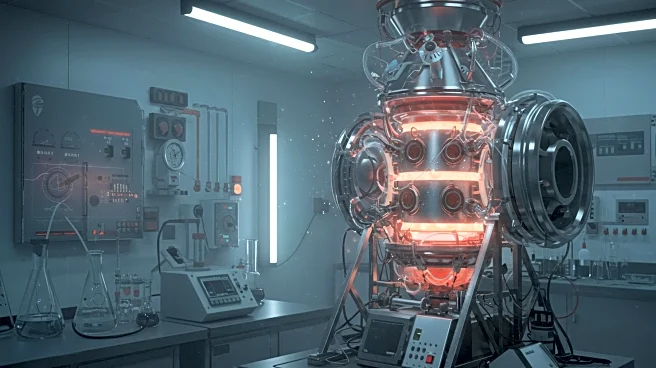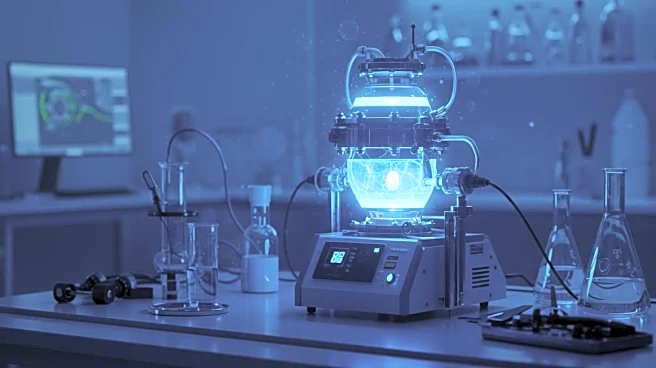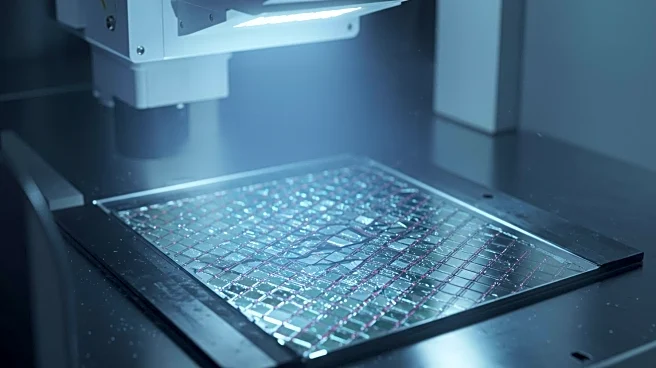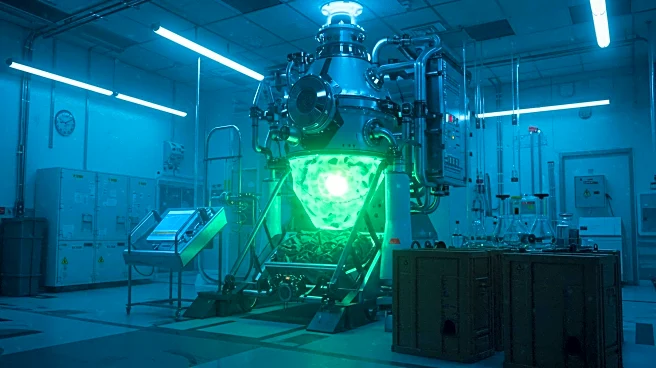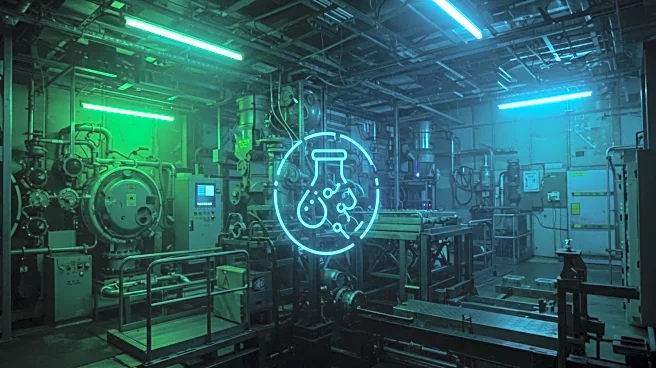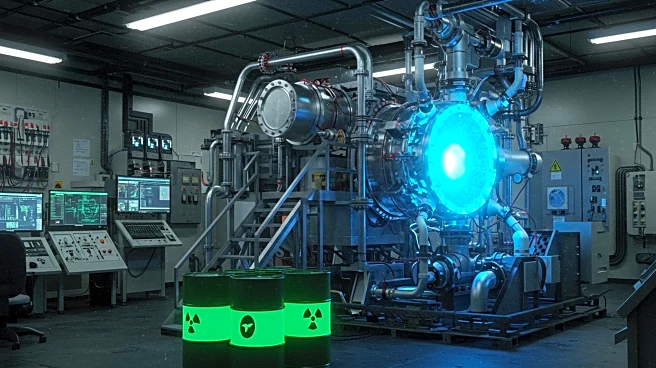What's Happening?
Researchers at the University of British Columbia have developed a room-temperature reactor that uses electrochemistry to enhance nuclear fusion rates. The Thunderbird Reactor, a bench-top-sized particle accelerator, combines a plasma thruster, a vacuum chamber, and an electrochemical cell to improve deuterium-deuterium fusion rates. By electrochemically loading a palladium metal target with deuterium fuel, the team increased fusion rates by 15% compared to traditional plasma field loading methods. This approach, which uses one volt of electricity to achieve results typically requiring 800 atmospheres of pressure, did not achieve net energy gain but demonstrated a reproducible method for boosting fusion rates. The research aims to make fusion science more accessible beyond large national labs.
Why It's Important?
The development of a room-temperature reactor for nuclear fusion has significant implications for clean energy generation. Nuclear fusion, which releases energy by combining atomic nuclei, is more powerful and produces less radioactive waste than nuclear fission. The ability to enhance fusion rates at lower temperatures could lead to more practical and scalable fusion energy solutions. This research could democratize fusion science, allowing smaller labs to contribute to advancements in the field. The modest performance boost achieved by the Thunderbird Reactor represents a step forward in fusion research, potentially accelerating the development of sustainable energy technologies.
What's Next?
The research team at the University of British Columbia plans to continue refining their approach, inviting the scientific community to build upon their findings. Future work will focus on systematically tuning fuel-loading methods and target materials to further enhance fusion rates. The team hopes their platform will inspire open and rigorous inquiry into nuclear fusion, potentially leading to breakthroughs in clean energy technology. As the research progresses, collaboration with other institutions and researchers could expand the scope and impact of these findings.
Beyond the Headlines
The Thunderbird Reactor's approach to nuclear fusion could shift the paradigm of fusion research, traditionally dominated by large-scale magnetic confinement methods. By integrating materials science and electrochemistry, this research opens new avenues for exploring fusion at lower temperatures and pressures. The interdisciplinary nature of the project highlights the potential for cross-disciplinary collaboration in advancing fusion technology. Ethical considerations regarding the accessibility and distribution of fusion technology may arise as smaller labs gain the ability to contribute to this field.
